lunes, 30 de noviembre de 2009
Entrega Final
viernes, 27 de noviembre de 2009
The Devil & Daniel Johnston

hundreds of songs, and dozens of fans.
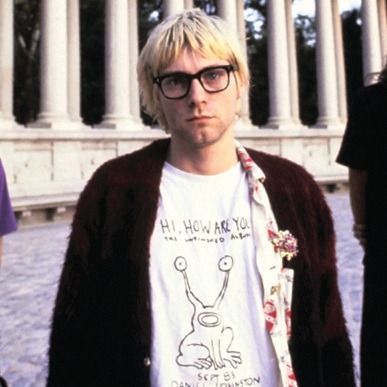
I've got a broken heart and you can't break a broken heart
I come knocking at your door
You don't love me anymore
But I just can't give up
'Cause I don't know what to do about it
You must be wrong if you think you don't love me
You could smile down on and put an happy ending to my song
I come knocking at your door
You don't live there anymore
Is it just a memory
Or am I a little crazy for you
If there's no love I just can't believe it
I've got a broken mind and only you can relieve it
I don't remember who you are
Are you someone that I saw
'Cause I really am confused
But I think that I still love you


La película:
La verdad yo no terminé de entender porque tanta gente admiraba tanto su música. Tal vez tiene que ver con que hoy en día ya no resulta tan distinta o tan innovadora, pero supongo que en su momento lo fue. Daniel es un gran artista visual, tal vez es tan bueno porque se es completamente fiel a sí mismo. Creo que esa es una gran lección que podríamos aprender de él y del documental. Él quería la fama y el éxito comercial, sin embargo cuando llegó a él lo rechazó porque veía al diablo en él. Cierto que esto se debió a su paranoia pero creo que tiene bastante de verdad.
Me gustó mucho la idea de dejar que las cintas que él grababa se volviera el hilo conductor. Las entrevistas con los padres y con el ex manager. El material de archivo. El documental juega con muchos elementos que lo vuelven muy completo y dinámico. En realidad se pasa muy rápido y logra generar un suspenso que es complicado en documentales de su tipo. En general me gustó mucho. Creo que fue un gran cierre de semestre.

Joy Division

In fear every day, every evening,
He calls her aloud from above,
Carefully watched for a reason,
Painstaking devotion and love,
Surrendered to self preservation,
From others who care for themselves.
A blindness that touches perfection,
But hurts just like anything else.
Isolation, isolation, isolation.
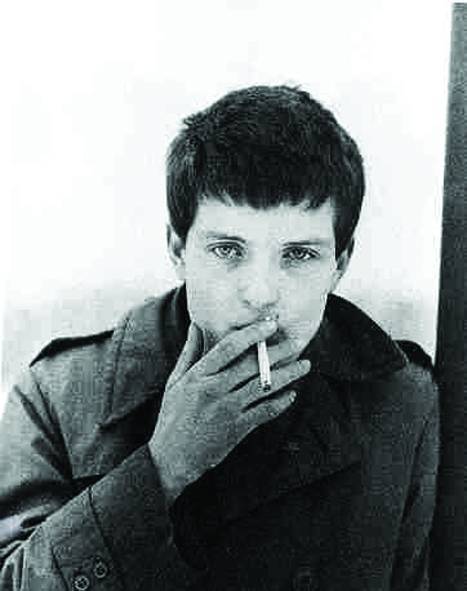
Mother I tried please believe me,
I'm doing the best that I can.
I'm ashamed of the things I've been put through,
I'm ashamed of the person I am.
Isolation, isolation, isolation.

But if you could just see the beauty,
These things I could never describe,
These pleasures a wayward distraction,
This is my one lucky prize.
Isolation, isolation, isolation...

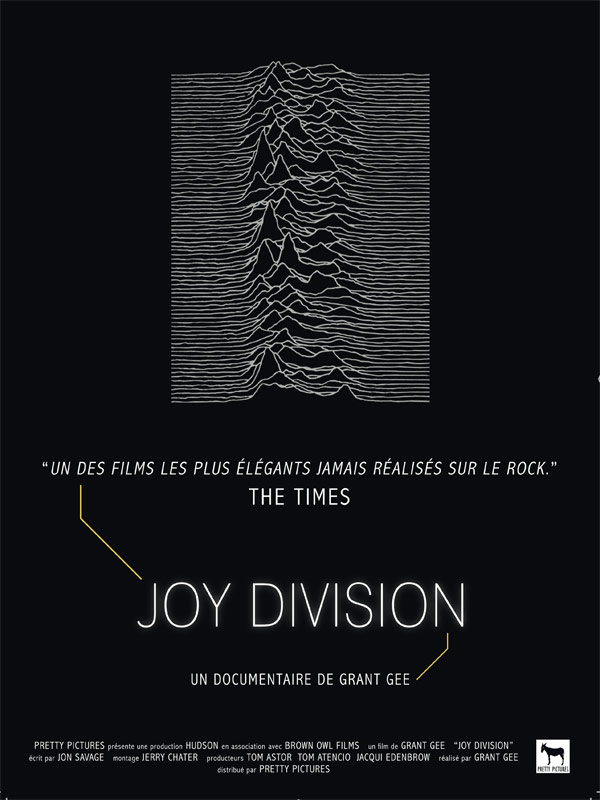
Me llamó mucho la atención que cuando se habla de que Ian Curtis se ha suicidado, cuando la noticia sale en los periódicos, se lee "Lead singer kills himself before tour." Ni siquiera se menciona el nombre, porque así de poco conocidos eran. Justo estaban despegando, su fama era completamente local. Y hoy ya que no existen ni él ni la banda, su éxito es mundial.


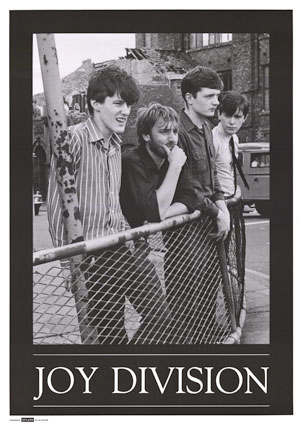
En general creo que es un gran documental. Disfruté mucho verlo y escuchar la música de Joy Division siempre se aprecia.
The Kids are All Right

Primero que nada he de confesar que este es mi primer acercamiento con la banda británca The Who. Había escuchado hablar mucho de ellos, pero nunca había buscado la manera de acercarme a su música o a su relevancia dentro de la historia de la música. En realidad la música no llamó mi atención, me pareció poco distintiva. Sí, tocan bien, pero lo que tocan bien podría tocarlo cualquier otra banda. No es como Pink Floyd o Led Zeppelin o Joy Division, bandas que tienen su estilo muy marcado, y que a pesar de que cada canción es distinta, uno identifica de manera inmediata de quien se trata. Con The Who no sentí eso.


También he de reconocer que me molestó bastante la manera en la que destrozaban sus instrumentos en cada concierto. Tal vez es mi "moralismo" pero creo que un músico debe de considerar sagrado su instrumento, pues es como si un cineasta fuera destrozando su cámara después de cada concierto ¿para qué? para demostrar inmadurez, rebeldía sin sentido, autodestrucción, autosabotaje, en realidad ¿cuál es el punto de hacerlo? Uno se acostumbra a los instrumentos con los que trabaja y eso toma tiempo, estar constantemente destruyéndolos es estar constantemente retrocediendo.
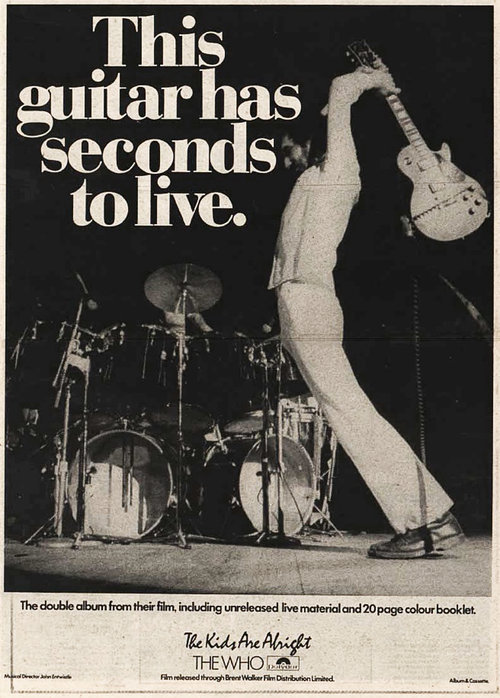
No me agradó la banda. Me parecieron antipáticos y lucidos. Supongo que todo lo aterior cesga mi apreciación del documental. Mismo que no me impresionó. La estructura está interesante pero no es nada que no se hubiese visto antes. En realidad sentí como si estuviera viendovideos de ellos en youtube yo por mi cuenta, sin saber bien por cual empezar, yendo completamente al azar y bueno, para alguien que no conoce a la banda tal vez serviría un poco de más orden, aunque entiendo que la idea era seguir con el desorden propio de la banda y está bien. El material de archivo. Normal. A veces se ecuchaba muy mal y supongo que fue una decisión pensada dejarlo así pero a mi me molestó ese hecho. En conclusión no me gustó el documental, creo que de todos los que vimos fue el que menos disfrute, cosa chistosa ya que el simple hecho de que sea musical le da puntos extras, pero nada más no va conmigo.

A day with the Boys

Un cortometraje plásticamente fascinante. La mezcla de texturas y de materiales, los colores, las formas, el movimiento, las tomas en slow motion, los freeze frames, el montaje, todo está perfectamente bien cuidado. En realidad creo que me cuesta trabajo analizar este film, porque siempre he creído que el cine experimental está hecho para dejarse llevar por las imágenes y los sonidos, por lo abstracto de las formas y dejándo de lado la narrativa, que a pesar de que en este caso es bastante clara, creo que no es lo importante a notar, ya que igual podrían estar contando la historia de unos niños que venden chocolates y la sensación sería bastante parecida, pues la forma le quita importancia al contenido y por esta misma razón uno no se ve impactado con lo que el cortometraje en realidad está exponiendo en pantalla. Es complicado intentar poner en palabras lo que un cortometraje de este tipo es capaz de hacer que uno sienta y experimente, pues siempre queda la sensación de que al reducirlo a palabras, se está perdiendo toda la fuerza que en un momento fue lo que fascinó. En realidad tiene más que ver con que uno como espectador no termina de entender que fue lo que vió, lo que escuchó, lo que sintió y esto complica aún más el intentar ponerlo en palabras. Vaya, mi punto es que el cine experimental no se puede reducir a palabras precisamente porque la narrativa es lo menos importante y es justo la narrativa lo que tiende a no perder cuando se plática, pues desde un principio fue pensada como palabras. Lo plástico por otro lado, siempre fue imaginado como plástico. Así que vale más que cada quien lo mire y cada quien experimente las distintas sensaciones que el corto desencadena.
Otro punto por el cual me cuesta trabajo analizarlo tiene que ver con que mi conocimiento sobre cine experimental es bastante reducido, y a pesar de que últimamente he estado viendo varias cosas del mismo, todavía no me siento segura en ese campo. El valor del cine experimental depende en gran medida de lo que experimenta. Este cortometraje fue realizado en los sesentas, pero yo no podría asegurar que lo que muestra en pantalla sea nuevo, pues por lo poco que he visto, el cine experimental proyectaba cosas impensables desde principios del siglo XX. Por eso, en lugar de asegurar que su trabajo experimental es interesante, me limito a afirmar que disfruté mucho viéndolo.
Clu Gullager (pequeña bio)
Clu Gulager (William Martin Gulager) was born November 16, 1928 in Holdenville, Oklahoma, the son of John Gulager, a cowboy entertainer.
Clu is part Cherokee in blood. His first cousin was Will Rogers (Actor)
As he grew up Clu served in the United States Marine Corps & was stationed at Camp Pendleton from 1946 to 1948.
Gulager played Billy the Kid in the 1960 NBC television series The Tall Men opposite Barry Sullivan as Pat Garrett, and played "Emmett Ryker" from 1964 to 1968 on another NBC series The Virginian starring James Drury, along with more than sixty other roles in film and television. He starred in the 1964 version of The Killers.
Over the years to follow Clu became a big star for his roles in horror movies such as The Return of the Living Dead, The Hidden and The Offspring etc.

Un poco sobre el avant-garde:
 Avant-garde film makers want to experiment with new ideas, forms, techniques, and expressions--and are often said to be "ahead of their times." Avant-garde films are characterized by a high degree of experimentation--whether it be in manipulation in narrative materials, in highly stylized visual representation, or in radical departures from the norms or conventions current at the time, avant-garde film is always a vehicle for the filmmaker’s expression.
Avant-garde film makers want to experiment with new ideas, forms, techniques, and expressions--and are often said to be "ahead of their times." Avant-garde films are characterized by a high degree of experimentation--whether it be in manipulation in narrative materials, in highly stylized visual representation, or in radical departures from the norms or conventions current at the time, avant-garde film is always a vehicle for the filmmaker’s expression.
Often, avant-garde films focus on the lyrical, the abstract, formal beauty for its own sake—and therefore may avoid conventions of narrative. As such, you might call them cinematic or painterly "poems." Abstract film has also been called "absolute" film.
Avant-garde films are often iconoclastic, mocking conventional morality and traditional values; the filmmaker's intense interest in eccentricities and extremes may shock for the viewers. Indeed, the avant-garde film maker’s purpose may be to wake or shake up the audience from the stupor of ordinary consciousness or the doldrums of conventional perspective. Such highly expressive and uncoventional films may become cult classics--and acquire the description, avant garde, as a result.
FUENTES:
- Clu Gulager Fansite. clugulager.com
- Avant-Garde (Experimental) Films. http://www.miracosta.cc.ca.us/home/gfloren/F-avant.htm
Sherman's March

Sherman's March
Directed by Ross McElwee
1986, 155 min.
Documental que a primera impresión podría sonar tedioso y aburrido. Una búsqueda personal que no tendría porque interesrle a nadie más. Sin embargo se vuleve bastante interesanta gracias a las chicas a las que aborda a lo largo de todo el film, pues todas son peculiares.
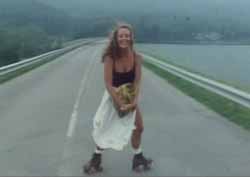
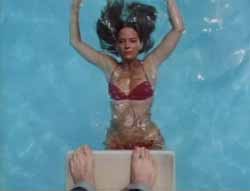
La cámara subjetiva, todo el tiempo, lo vuelve una experiencia al estilo de "Being John Malkovich" en la que se nos da la oportunidad de ver todo literalmente a través de los ojos de Ross McElwee y de sentir las reacciones que los demás tienen hacia Ross como si las estuvieran teniendo directamente hacia nosotros, me refiero a que cuando la chica coquetea con Ross, nosotros no podemos evitar sentirnos seducidos, cuando se enoja con él, sentirnos regañados, y así sucesivamente. Esto logra generar un nivel de empatía que rara vez es alcanzado.

La edición y el levantamiento de imágenes es bastante casero. En realidad casi no cuenta con efectos de postproducción. Supongo que esta decisión se tomó para lograr conservar la verosimilitud lo más posible, para evitar romper con la diégisis, para acercar aún más al espectador a creer que no hay censura ni manipulación del material. Y esta es justo la impresión que permanece cuando uno termina de ver el documental. Uno siente que Ross ha sido completamente sincero en su manera de contarnos su experiencia, que se puede confiar en lo que se ha visto, que se conoce al personaje y que es seguro encariñarse con él.
Director Statement:
had no firm idea as to how to begin shooting Sherman's March. That is, I only knew that I wanted to make some sort of film about my homeland, the South, and I was interested in the degree to which the South was still haunted by the Civil War - Sherman's campaign in particular - but I never intended for it to be an historical documentary. I thought perhaps my shooting would yield more than one film, and I assumed that racial relations in the so-called "New South" would be a major theme - perhaps the major theme of the film. But other themes became more dominant, though the notion of how blacks and whites coexist in the South is still imbedded in much of the footage. I thought I would probably narrate it with first-person voice-over, as I had done in Backyard, but I wasn't enthusiastic about stepping in front of the camera to perform monologues. I was more comfortable behind the camera. But as I finished my first month of shooting in North Carolina and realized that this film was going to be more directly autobiographical than I had anticipated, I began filming monologues. I thought it would be best at least to get them on film. I could decide whether to use them later.
I was on the road for about four months, and shot, or was ready to shoot, nearly every day. I was open to filming anything that came along. Serendipity was paramount. The only requirement I forced on myself was that I somehow stick to the path Sherman's army made as it swung through Georgia and the Carolinas. I shot perhaps twenty-five hours of film. I did not have a very big budget and had to marshal my film stock carefully. I sometimes wonder how much more footage I would have shot if I had been shooting video, but video was not really viable for field-shooting back in the early 1980s when I shot Sherman's.
The first test screening of any material from Sherman's March was comprised of scenes from my meeting and pursuit of Pat Rendleman, the aspiring actress who was in search of Burt Reynolds. I did not include my Atlanta monologue, filmed in a motel after Pat left Atlanta. After the screening, there was a sense that something was missing, so I reluctantly cut that monologue into the version I had shown, and it seemed to work. I then processed all the other monologues I had shot on the road and ended up using most of them. I got over my camera-shyness and my reluctance to put the filmmaker in front of the camera. The first assemblage of all the footage I had shot, with all of the portraits, was eight hours long! I projected it for a small group of filmmaker friends. It took me another two and a half years to finish editing Sherman's March.

An excerpt from “Southern Exposure: An Interview with Ross McElwee” By Scott McDonald, Film Quarterly, Summer 1998.
S.M.: ''What was the balance between how much you shot and didn't shoot when you were with people?''
'I was almost always ready to shoot. I kept the camera within reaching distance, sometimes balanced on my shoulder. Maybe Sherman's March took five months of shooting. I never figured it out exactly. But even between major portraits, when I was on the road, I was totally open to filming whatever might happen in a gas station or in a restaurant, or wherever. So in one sense you can count all that time at "filming time."
I'd guess the total amount of footage I actually shot was about 25 hours. I don't remember exactly. In the finished film I ended up with 2 1/2 hours of that--a 10 or 11 to 1 filming ratio. But that other ratio, between five months and 2 1/2 hours--that's astronomical.
I spent five or six days with Charleen [Swansea]. That was probably the shortest period overall that I spent with anybody. She's so intense; things happen so quickly with her, that I didn't need to be there long. Of course, there were also times when I'd go with her prepared to film, and film nothing because it wasn't interesting enough. I'd just relax and enjoy myself if I could.
I'd never presume to make a pronouncement concerning what I think relationships between men and women are all about. I think it's abundantly clear, from Sherman's March, that I myself, haven't a clue--at least at that point in my life. I guess the one lesson I might have garnered from the experience of making Sherman's March was that true love, whatever that is, was unlikely to present itself as long as I was determined to track it down with a camera, and the audience knows this. But the humor of this knowledge, this audience one-upmanship, is one of the reasons why the film works--at least for most people who see it. In general, I'd have to agree with the philosophy stated in innumerable Broadway songs that love is likely to strike when you least expect it. That was certainly the case with me and Marilyn, my wife. And from then on, it's a matter of redefining what love means as you stay with someone.'
FUENTES:
- Ross McElwee. Sherman's March. http://rossmcelwee.com/shermansmarch.html
Jolies

Sadie Benning was born in Madison, Wisconsin in 1973, and grew up in Milwaukee, WI. She received her M.F.A. from Bard College in 1997.
Her videos have been exhibited internationally in museums, galleries, universities and film festivals since 1990 with select solo screenings at the Museum of Modern Art, Film Society of Lincoln Center, Centre Georges Pompidou, and Hallwalls Contemporary Arts Center, among other venues.
 Her work is in many permanent collections--including those of the Museum of Modern Art, The Fogg Art Museum, and the Walker Art Center--and has been included in the following group exhibitions: Whitney Biennial (2000 and 1993); Building Identities, Tate Modern (2004); Remembrance and the Moving Image, Australian Centre for the Moving Image (2003); Video Viewpoints, Museum of Modern Art (2002); American Century, Whitney Museum of Modern Art (2000); Love’s Body, Tokyo Museum of Photography (1999); Scream and Scream Again: Film in Art, Museum of Modern Art Oxford (1996-7); and Venice Biennale (1993). Her two-channel video installation Play Pause (2006) premiered at the Wexner Center for the Arts in 2007 as part of a solo exhibition of video, paintings, and wall sculptures, Suspended Animation. Play Pause has also been exhibited at Dia: Chelsea (2007). Benning has shown her drawings and paintings in group exhibitions at Threadwaxing Space (1996), Orchard Gallery (2004?), and the White Columns Annual (2007). In 2007, Orchard Gallery presented Form of…A Waterfall, a solo exhibition of Benning’s abstract drawings, sculpture, video installation, and “play/pause” records.
Her work is in many permanent collections--including those of the Museum of Modern Art, The Fogg Art Museum, and the Walker Art Center--and has been included in the following group exhibitions: Whitney Biennial (2000 and 1993); Building Identities, Tate Modern (2004); Remembrance and the Moving Image, Australian Centre for the Moving Image (2003); Video Viewpoints, Museum of Modern Art (2002); American Century, Whitney Museum of Modern Art (2000); Love’s Body, Tokyo Museum of Photography (1999); Scream and Scream Again: Film in Art, Museum of Modern Art Oxford (1996-7); and Venice Biennale (1993). Her two-channel video installation Play Pause (2006) premiered at the Wexner Center for the Arts in 2007 as part of a solo exhibition of video, paintings, and wall sculptures, Suspended Animation. Play Pause has also been exhibited at Dia: Chelsea (2007). Benning has shown her drawings and paintings in group exhibitions at Threadwaxing Space (1996), Orchard Gallery (2004?), and the White Columns Annual (2007). In 2007, Orchard Gallery presented Form of…A Waterfall, a solo exhibition of Benning’s abstract drawings, sculpture, video installation, and “play/pause” records.
(En este link se encuentra la discografía del grupo así como links para bajarlos: http://www.vagos.fm/showthread.php?t=74373)
Benning is a former member and cofounder, with Kathleen Hanna and Johanna Fateman, of the music group Le Tigre. She has received grants and fellowships from Guggenheim Foundation, Andrea Frank Foundation, National Endowment of the Arts, and Rockefeller Foundation. Awards include Wexner Center Residency Award in Media Arts, National Alliance for Media Arts & Culture Merit Award, Grande Video Kunst Award, and the Los Angeles Film Critics Circle Award. She currently lives in Chicago.
Jolies
El diario de una chica.


FUENTES:
jueves, 26 de noviembre de 2009
Nobody's Business

En general encontré el documental un poco falto de material interesante. Un hombre (alan berliner) intenta indagar sobre su pasado histórico a través del confrontamiento con su padre. Él menciona que para realilzar Nobody's Business:
"I had to be just vulnerable enough to contemplate transforming the personal into the public, yet just courageous enough to believe it was for good reason. Just dumb enough to think I could do it, but then just smart enough to pull it off. And, as in the making of any work of art that focuses life through the prism of time, just young enough and/but just old enough... Just young enough not to know any better. Just old enough to really care. Just young enough not to ask anybody's permission. Just old enough to realize that if I didn't do it now, I might never have another chance. Young enough to rush in recklessly. Old enough to take my time leaving. Young enough to ask ten thousand questions. Old enough to let a few go unanswered. Young enough to have a quick left jab. Old enough to know when to take a punch. Young enough to hate losing. Old enough to let him win. (Some of the time, anyway.) Young enough to still be his dutiful son. Too old to still call him Daddy. Young enough to still think I can change him. Old enough to realize I am already alot like him. Young enough to think I can keep him from growing old. Old enough to know better. Young enough to be exasperated, even angry. Old enough to show my love. Young and stubborn. Older and even more stubborn."
Bueno, me gusta la manera en la que él lo pone. Explica lo complicado que debió de ser para él el lograr obtener los resultados que buscaba, aunque a mí como espectadora, en realidad no me quedó muy claro que se hubieran cumplido. Creo que al terminar de ver la película, no quedé con la sensación de que él hubiera terminado encontrando lo que buscaba, al contario, sentí que el padre se mantuvo hasta cierto punto impenetrable, cosa que le da un toque interesante al documental, pero se vuelve frustrante lidiar con la actitud negativa del padre, aunque uno lo comprenda y llegue a empatizar con él.
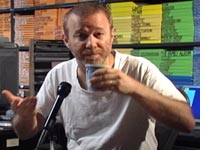
Everyone naturally assumes that my father, the primary force behind our family chronicles, must have enjoyed putting the old family 8mm Bell and Howell in my hands, and teaching me how to use it, while with unflappable concentration (Keep it steady) I brought my eye to the viewfinder for the very first time (Try to put the subject in the center of the frame) and pressed the trigger (Keep your finger on the button) before recklessly panning (Not too fast now) across the field of view (Just because it's a movie camera doesn't mean you always have to move it) until the spring driven camera motor (Remember you only have 25 seconds) would cough itself to a stuttering halt (Now wind it up and try it again). All of this paternal encouragement (You're making movies!) certainly must have made an indelible mark on the impressionable young filmmaker to be.
Not quite. Consider that a dream sequence.


The truth is I never actually "decided" to become a filmmaker; somehow via a more arduous and circuitous route derived of inner necessity, I grew into one. Much of my adult life has been spent grappling with the conflicts and contradictions of family. With both the presences and absences of memory. When I came upon my family home movies some 20 years later -- as if for the very first time -- the images I had forgotten about suddenly became triggers for a flood of memories. Using them in my films became a kind of photo-therapy, perhaps even a way towards healing some of the wounds of my childhood.
I still often wonder why my father never offered to share his newfangled mechanical toy with me. Wouldn't any good parent have done so? Didn't he realize how high the stakes were? Like music lessons, stamp collecting or chess, this could have easily been the seed of a lifelong passion. Maybe it would have motivated me to join the elementary school audio-visual squad, which in turn might have made me aspire to write screenplays, or become an actor. Perhaps even a Hollywood director.
Instead, I became a filmmaker who uses home movies in films about his family.
FUENTES:
- Alan Berliner. Articles. http://www.alanberliner.com/aej_01.html
Tarnation
País: USA.
Año: 2003.
Duración: 88 min.
Género: Documental.
Intervención: Jonathan Caouette, Renée Leblanc, David Sanin Paz, Rosemary Davis, Adolph Davis.
Producción: Stephen Winter.
Producción ejecutiva: Gus Van Sant y John Cameron Mitchell.
Música: Jonathan Caouette.
Fotografía: Jonathan Caouette.
Montaje: Jonathan Caouette y Brian A. Kates.
LA PRIMERA PREGUNTA QUE SURGE EN MI MENTE:
¿Qué rayos es Tarnation?
Según Wikipedia: colloquial euphemism for damnation, primarily used in the southeastern United States, part of the expression "What in tarnation?" used to indicate disbelief.
Importante entender el título. La relación con el film es evidente.
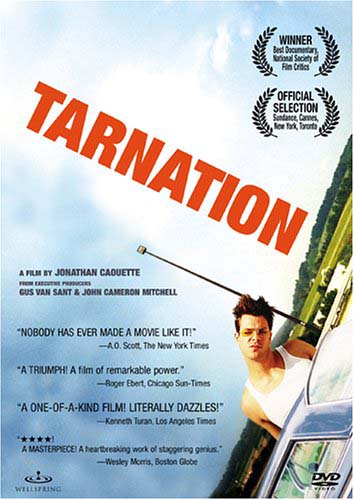
Jonathan Caouette. Checando su blog. Una de sus tres películas favoritas es Tarnation. (las otras dos son Rosemary's Baby y Village of the Damned.) En realidad no me sorprende una prueba más de su narcisismo, simplemente me parece de mal gusto publicarlo en un blog de manera tan descarada, aunque supongo que después de haber realizado una película entera sobre él mismo, esto no resulta tan egocéntrico.


Un poco sobre la película:
$218.32 plus dozens of hours of work on his home computer totally changed Jonathan Caouette’s world. At the age of 11, Caouette borrowed a video camera from a neighbor and began filming his family as a way of validating and coping with his daily life. Almost two decades later, Jonathan Caouette took his 160+ hours of footage and with a total budget of only $218.32 created “Tarnation,” a true independent film in every sense of the word.
“Tarnation” chronicles Jonathan’s chaotic upbringing, focusing on his relationship with his mentally-ill mother, Renee. Caouette’s documentary-style film mixes pop culture references with footage shot over the course of 20 years to create an incredibly touching story of a dysfunctional family and the undying love that binds a mother and son.

Una entrevista:
How much of a struggle was it for you to decide to put your life on display with this film?
I have to say that it’s been an emotional roller coaster. It really has, and it still is. I mean, it would be a very hypocritical statement if I said, “Oh, everything’s fine. It was cathartic and now I’m ready to move on.” It’s still crazy. It still wakes me up in the middle of the night with butterflies in my stomach, sort of pondering what it is that I’ve actually done here.
I think, ultimately, it’s a beautiful thing. I think it’s a very poignant story that needed to get out there. Between my mother and I, we always knew that we had a really, just sort of vital, urgent story that had to get out there. I just never realized it was going to be by way of the real McCoy footage that was kind of hovering under my nose the whole time.
It’s been a beautiful thing. It’s been a nice calling card, too, career-wise. I’m sort of an out-of-nowhere filmmaker. The film has been embraced by such amazing people and of course endorsed with the names of [executive producer] Gus Van Sant and [executive producer] John Cameron Mitchell. But it’s been very, very daunting. I’m a newbie neophyte in all of this. I was a doorman before all this happened (laughing). Anything that was ever going to happen like this in this world of how this film was catapulted to where it is, it was always on a sort of delusional level. It was never actualized. At best, if the film was ever made, or if anything I was going to do utilizing this footage was ever made, at best I thought it would be on a video projector somewhere in a hole in the wall in Williamsburg, Brooklyn. But I never in a million, trillion years anticipated this sort of response – ever. It’s just an amazing thing.
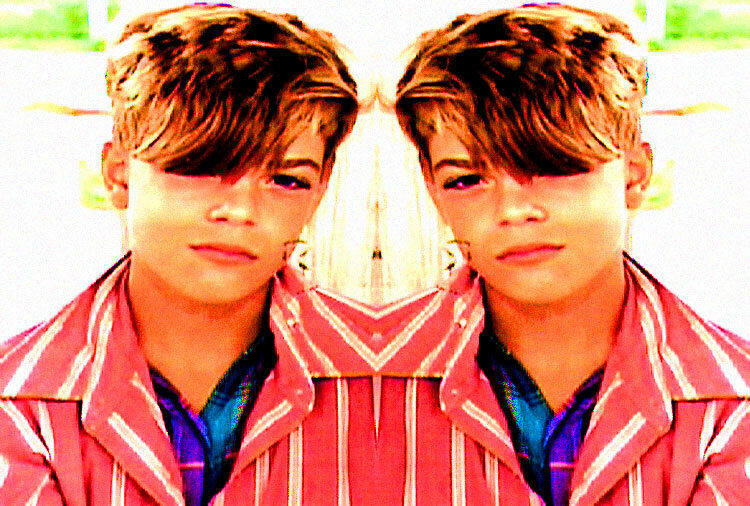
Will the success and critical acclaim that came with “Tarnation” be a tough thing to live up to with your second film? Where do you go from here?
Oh yeah, there are so many things I want to do. There’s actually a few possibilities in the works of doing one and/or two remakes of two very intensely popular rock musicals from the 70s that were plays and then turned into films. It’s that time again to revisit the stories for an updated version, perhaps, which would be cool.
I definitely want to dabble in all kinds of genres of film. I don’t want to sell out too quickly. I don’t want to succumb to the Hollywood system. As a matter of fact, I would really love to sort of remain in the D.I.Y. world of things and still just stay on my computer and try and do a few things.
One of the other things that I was wanting to do, which will probably, inevitably, realistically be my next project is I’m taking three films that were all made in succession between the years of 1973 and 1977 and they all star this one actress, who actually assumes the same aesthetic throughout all of the films - even right down to her hair length and accent. And my fantasy is to basically get all three of these films free of underscore and free of music, and re-augment them and re-mix them into a new two hour film that’s going to evoke a completely different story. Inadvertently talking to David Lynch’s producer about it out at the Cannes Film Festival, I said, “This is sort of like a one day thing I want to do to get back to the MIX Film Festival for kick-starting ‘Tarnation.’ Like an under the gun, off the record, no distribution rights inferred, like a 'Superstar: The Karen Carpenter Story' kind of thing.” And he got so excited about it that he actually wants to come on as producer.
Are you kicking yourself for talking about what might be your next project? Doesn’t that add some pressure?
No, I’m happy that it happened. When I went to th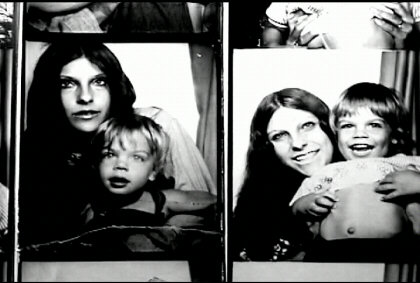 e Cannes Film Festival, I knew that that was going to be the place where people would be like, “What’s next? What’s next? What’s next…?” So I started fantasizing about talking about something, or pretending to talk about something that actually, the more I thought about, the more of a reality it became. It started off as a way to kind of coax people with the idea that I had something else to do, but now it’s really become a reality. And the other thing I want to do is, believe it or not, a sequel or an equal to “Tarnation,” which I’m going to be doing in the next year. It’s going to be called “Buddy.” I don’t want to give it away, what it’s about. All I can say is that it’s going to be creatively utilizing the rest of the 160 hours of footage that I’ve acquired from my life and augmenting it into something really unexpected.
e Cannes Film Festival, I knew that that was going to be the place where people would be like, “What’s next? What’s next? What’s next…?” So I started fantasizing about talking about something, or pretending to talk about something that actually, the more I thought about, the more of a reality it became. It started off as a way to kind of coax people with the idea that I had something else to do, but now it’s really become a reality. And the other thing I want to do is, believe it or not, a sequel or an equal to “Tarnation,” which I’m going to be doing in the next year. It’s going to be called “Buddy.” I don’t want to give it away, what it’s about. All I can say is that it’s going to be creatively utilizing the rest of the 160 hours of footage that I’ve acquired from my life and augmenting it into something really unexpected.
When you originally cut “Tarnation” it was 2 ½ hours and you got it down to 88 minutes?
I got it down to 88 minutes. The reason it was 2 ½ hours was that I sort of maniacally put it together. The reason I did it so quickly, I did it in like three weeks, I met an intern from the MIX Film Festival who said, “Well, whatever this is that you are working on…” I sort of accidentally showed it to him and he said, “Whatever this is that you are working on, you should finish it because there’s a deadline for our film festival coming up in the next three weeks.” That’s when I went on this sort of editing rampage and got it down to my 2 ½ hour cut, which was a much different film at the time. The stipulation for showing it at MIX was that they couldn’t show a 2 ½ hour cut, so I cut it down to 2 hours. Then after that they wanted it at 88 minutes for Sundance. That’s when I had to revisit everything and crunch everything down. I inevitably changed the ending, which was more of an art imitating life type of thing.

Was it more difficult to get it to the 2 ½ hour original cut or down to the final 88 minute cut?
Definitely the most challenging aspect about piecing this film together was crunching it down to the 88 minutes because there’s so much that was left out. There could be conceivably three different films that were left out. I think, ultimately, that’s why I ended up cutting it out. There would be other subject matter and subplots that did exist that I realized at the end would be much more appropriate for an additional film, perhaps one day.
A lot of kids pick up video cameras but not everyone chronicles this much of their life.
I know.
Did you have any inkling as a kid that someday this is what you were going to be doing with your life?
Always. Always. (Laughing) I can even get you the number to my first camp counselor. He’s known me since I was 5 years old and all I used to talk about was wanting to be a filmmaker. It’s been in my blood. I always had a love for film and knew I always wanted to be a filmmaker. I would go to movie theaters with my grandfather in the pre-VCR days and with a tape recorder, I would record all the audio. I was really fascinated, even down to everything like the sound pops and the reel changes, every aspect of it. After the movie we would go to our local drugstore and I would pick up about four or five stacks of typing paper or loose drawing paper. I would, with markers, I would go through and draw the movies frame by frame, basically. Or at least every other millisecond of the movie, to the audio of the movie I would record when I went to the theater with my grandfather. So it’s always been there – somehow, someway.
You used your camera to get to the truth about your life and your family. I’m wondering if you could have just put the camera down and talked to let’s say your grandfather, or did everything always have to be through the camera to distance yourself?
It would depend a lot on the subject matter. I was always using the camera as some sort of quasi-defense mechanism or a weapon of some kind to ultimately make sense of everything, just a lot of the stuff that I was being subjected to. And it was just a way to validate things. It was more of a confirmation. “Is this really happening? Pinch me if this is really happening.” Or, “This is so spooky and I’m alone in this situation. If I document it maybe I can look back on it and piece things together.” Because you know documenting things sometimes can enable you to hold onto memories, which I’m really into. I love the idea of holding onto moments.

FUENTES:
- Tarnation Movie. Jonathan Caouette. http://movies.about.com/od/directorinterviews/a/tarnation101504.htm
Johan Van der Keuke


Es una película con excelente factura. El sonido y la imagen están increíblemente bien cuidados y ambos tienen un discurso igual de importante. Describe otra manera de ver la cegura, en la que no es excusa ser ciego, con esto me refiero a que la ceguera no es vista con lástima, sino como parte de la vida misma.

Ben Webster in Europe

Big Ben. The Frog.

Verlo tocar es un deleite. Escuchar como es ovacionado mientras miramos como sube y baja de distintos medios de transporte el solo, viajando de manera ligera, sin nadie que lo acompañe, sin gente siguiéndolo o deteniéndolo, sin nadie que se percate de quien es el que recorre las ciudades europeos, logra contrastar a tal grado que uno empieza a tener una ligera impresión de lo que sentirá él teniendo que vivir una vida que desentona tanto con su vida recordada. En realidad Ben no es el primero ni el único "Grande" de la historia que termina quedándose atorado en una época a manera de souvenir, por el contrario creo que comparando su final con el de gente como Méliès o Reynaud, la verdad es que le fue bastante bien.
Johan Van Der Keuken. Cineasta y fotógrafo Holandés.

hasta el momento en el que quité la cámara del trípode
y me propuse filmar a la altura de los ojos, a pulso”
- Johan Van Der Keuken

“It was my grandfather who introduced me to photography. Somewhere between the age of 12 and 17, experimenting with whatever material happened to be available, I became a photographer. In 1955, I published my first book of photographs entitled, We are 17, a 30 picture portrait of the Amsterdam high school group I was part of. The book was followed in 1957 by the romantic, Behind Glass, published when I was already a student at the IDHEC film school in Paris. There were no scholarships for photography at the time, but there were for film. Film was far more serious.”
-Johan Van Der Keuken
FUENTES:
- Blogs & Docs. Johan Van Der Keuken. http://www.blogsandocs.com/?p=87



